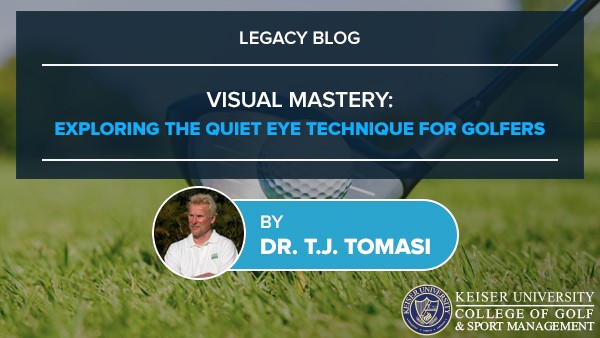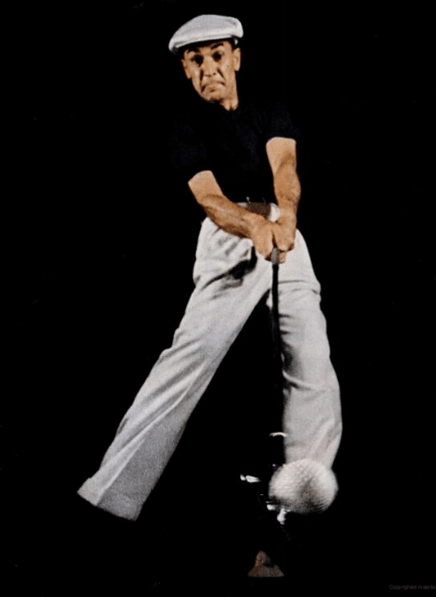Visual Mastery: Exploring the Quiet Eye Technique For Golfers

A Legacy Post by Keiser University College of Golf Senior Faculty and Director of Research Dr. T. J. Tomasi (1940-2023)
Darting eyes are designed to locate threats – at this point, you are in the first stage of the response cycle. The second stage is assessing the information your darting eyes gathered so you can effectively narrow your focus to deal with the exact problem. You start the process with a wide-angle surveillance lens that narrows as the target is profiled. When a threat is found, all relevant assets are marshaled to meet/defeat the threat. This same sequence governs each shot when you play golf, yet most golfers lock onto the target like this only a few times a round – which is why they don’t hit many targets.
How can you hit more targets? The key is called the Quiet Eye (QE), and whether you’re shooting a gun, a bow/arrow, or hitting a golf ball, research shows that QE needs to be part of your aiming repertoire. “…a particular gaze called Quiet Eye has gained growing attention among researchers investigating aiming tasks … as a measure of optimal attentional control,” says researcher Don Hyung Lee from the University of Exeter in England. Here, science is telling us that what you do with your eyes after the general information-gathering stage determines how good a golfer you will be. If your eyes continue to flit about the entire scene instead of funneling down, you will be overwhelmed with too much information – you may be looking at the target, but you’re not seeing it.

Ben Hogan’s eyes are wide open as he locks onto his target at impact.
Thus, at the correct point in your pre-shot routine [see my book, The 30 Second Swing], you must narrow your attention to the specific target, screening out all excess info not directly related to your precise aim. It is this ability to taper attention from the general to the specific [aka ‘aim small, miss small’] that allows a golfer to attain personal peak performance, a situation where an eight handicap performs as the best eight they can be while the 23 handicap is at max also.

The Scan – The first step is to make what I call a panorama QE scan, where I look at big world features like the overall topography, the wind, how long it’s been blowing, how long the sun’s been shining, the drainage patterns, and the type of grass. Then my focus funnels via a portrait QE scan, where I’m gathering small-world info about the break of my putt, the area around the cup, and the point [marked in my mind by an x] at which the ball will begin its major curve as it’s pulled by gravity into the hole. I must aim the putter face correctly and apply the correct force to roll the ball over this point.

The Focus = Force Application – My attention has now funneled down even more – I’ve taken care of the direction, and now my sole attention is producing the correct force [distance]. Note there is no x in my sight picture at this stage because my mind is clean and the task is singular — speed – everything else has already been attended to in the previous steps.
Takeaway: This process of panorama to portrait is how you should simplify a complex task – you should not simplify it by leaving things out or skipping important information.
Learn more!
Want more tips? If you want to take your game to the next level, contact our team at Keiser University’s College of Golf & Sport Management today. With our dedication and experience, together, we can elevate your game to new heights. Give us a call today at 888-644-4964.














